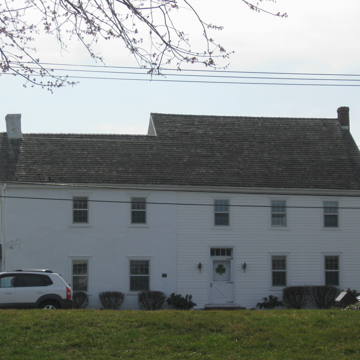Limestone Road, a colonial route now much-widened, crosses five miles of undulating Piedmont terrain from the Pennsylvania line to Milltown. It linked the fertile farms of southeastern Pennsylvania to shipping points at Newport and Stanton, Delaware, from which grain traveled by boat to Philadelphia's burgeoning markets. Its long, steady downgrade made it popular with teamsters even after the Newport and Gap Turnpike opened in 1808. At the geographical center of Mill Creek Hundred and originally on a crossroads, the Mermaid is said to have opened in 1746 and remains in the original family. It retains an old liquor cabinet, money drawers, postal cabinet, and ballot box. A James K. Polk campaign flag was discovered in the attic. The stone part of the house is oldest, having replaced a log dwelling. The building operated as a tavern until 1869, witnessing the Civil War “Battle of the Mermaid,” a scuffle in which Democrats tried to prevent the Fourth Delaware Regiment from voting.
You are here
Mermaid Tavern
If SAH Archipedia has been useful to you, please consider supporting it.
SAH Archipedia tells the story of the United States through its buildings, landscapes, and cities. This freely available resource empowers the public with authoritative knowledge that deepens their understanding and appreciation of the built environment. But the Society of Architectural Historians, which created SAH Archipedia with University of Virginia Press, needs your support to maintain the high-caliber research, writing, photography, cartography, editing, design, and programming that make SAH Archipedia a trusted online resource available to all who value the history of place, heritage tourism, and learning.


